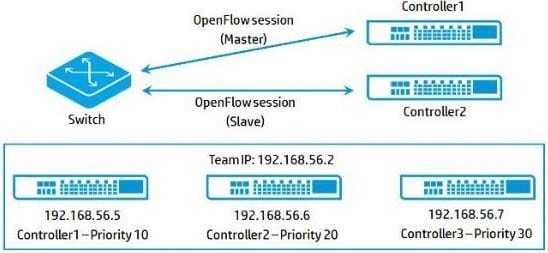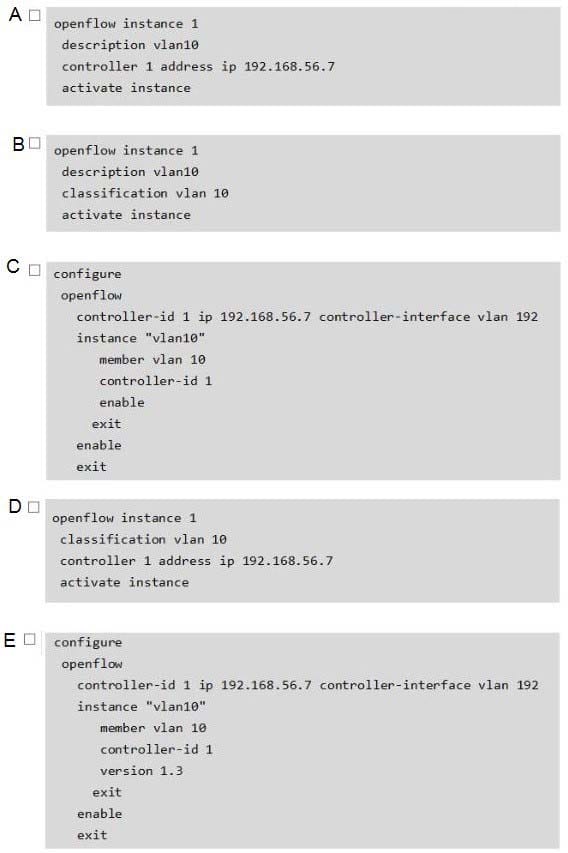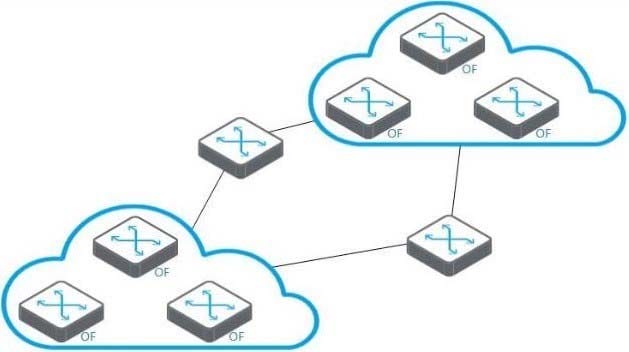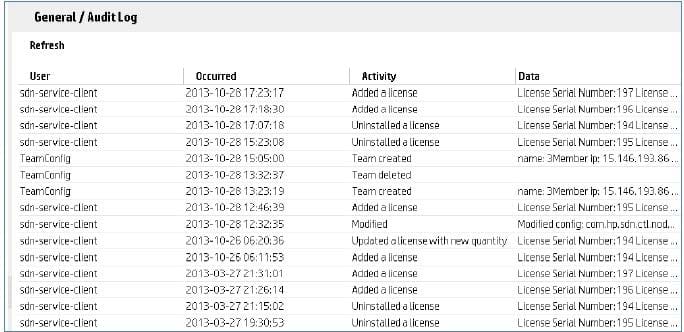Exam Details
Exam Code
:HP2-Z31Exam Name
:Creating HP Software-defined NetworksCertification
:HP ASE - FlexNetwork Architect V2, HP ASE - FlexNetwork Integrator V1Vendor
:HPTotal Questions
:90 Q&AsLast Updated
:Mar 27, 2025
HP HP ASE - FlexNetwork Architect V2, HP ASE - FlexNetwork Integrator V1 HP2-Z31 Questions & Answers
-
Question 1:
Refer to the exhibit.

Which HP VAN SDN Controller feature displays the output in the exhibit?
A. Audit Log
B. OpenFlow Monitor
C. Support Log
D. Alerts
-
Question 2:
How does an HP Provision OpenFlow device treat packets received on a port blocked by Spanning Tree Protocol?
A. Packets are submitted to the OpenFlow pipeline for processing.
B. Packets are not submitted to the OpenFlow pipeline for processing.
C. BPDU frames are submitted to The OpenFlow pipeline for processing.
D. All Layer 2 frames are submitted to the controller for processing
-
Question 3:
A company has video, voice, and collaboration applications. The company is looking for a solution that improves performance. Which benefit does software-defined networking (SDN) provide tor this company?
A. SDN establishes a loop-free, non-baking architecture using Transparent interconnection of Lots of Links (TRILL) or Shortest Path Bridging (SPF3), as the company chooses.
B. SDN applications can automate the scripting of CLI commands- that adjust QoS policies as necessary
C. SDN applications can determine which traffic flows require prioritization and then program the infrastructure to prioritize these flows.
D. SDN adds three additional priority classes, specific to voice, video and collaboration, in addition to the eight classes provided by traditional QoS mechanisms.
-
Question 4:
Which Open Flow plane is responsible for forwarding the packets?
A. Control plane
B. Application plane
C. Management plane
D. Data plane
-
Question 5:
Refer to the exhibit.

A team of HP VAN SDN Controllers has been configured. In addition, regions have been configured. The switch shown in the exhibit has two OpenFlow sessions as follows:
Controller1 - Master Controller2 - Slave
Controller1 is rebooted What happens?
A. The role orchestration service detects Controller1 failure, and Controller2 becomes the master. Once Controller1 rejoins the team, it becomes the master, and Controller2 reverts to being the slave.
B. The role orchestration service detects Controller1 failure, and Controlle2 becomes the master. Once Controller1 rejoins the team, it joins as the slave controller.
C. The role orchestration service detects Controller1 failure. Controller2 becomes the master, and Controller1 becomes the slave. Once Controller1 rejoins the team. It joins as the master and Controller2 becomes the slave.
D. The role orchestration service detects Controller1 failure. Controller2 becomes the master and Controller1 becomes the slave. Once Controller1 rejoins the team it no longer communicates with the switch.
-
Question 6:
Which switches will initiate an QpenFlow connection to the HP VAN SDN Controller? (Select two.)

A. Option A
B. Option B
C. Option C
D. Option D
E. Option E
-
Question 7:
Which services does HP IMC SDN Manager provide? (Select two.)
A. Managing switch listeners
B. Updating Topology Service discovery protocol
C. Managing OpenFlow enabled SDN resources
D. Creating and maintaining flow policies
E. Managing and maintaining application awareness
-
Question 8:
Which HP IMC SDN Manager functionally provides a detailed overview of flow entry history?
A. SDN Manager service flow management
B. SDN Manager Open Flow device management
C. SDN Manager dashboard
D. SDN Manager flow entry management
-
Question 9:
Which protocol is used for link discovery when OpenFlow switches are separated by a non- OpenFlow switch?
A. BDDP
B. RSTP
C. LLDP
D. LACP
-
Question 10:
Refer to the exhibit.

The topology shown in the exhibit has the following characteristics:
*
The Open Flow enabled switches are running in virtualization mode with member VLAN 10
*
All the switches in the topology share the same VLANs.
*
All the VLANs are tagged on all the links.
*
Each OpenFlow domain is controlled by its own controller and is making independent decisions
*
Every switch within the topology has PVST enabled only on VLAN 10
The networking team implementing OpenFlow reports that there are communication problems between the OpenFlow domains. What could be the cause of this communication problem?
A. This is an unsupported topology.
B. OpenFlow requires a dedicated out-of-band management network
C. OpenFlow networks that communicate must use different VLANs.
D. A loop has been formed.
Related Exams:
Tips on How to Prepare for the Exams
Nowadays, the certification exams become more and more important and required by more and more enterprises when applying for a job. But how to prepare for the exam effectively? How to prepare for the exam in a short time with less efforts? How to get a ideal result and how to find the most reliable resources? Here on Vcedump.com, you will find all the answers. Vcedump.com provide not only HP exam questions, answers and explanations but also complete assistance on your exam preparation and certification application. If you are confused on your HP2-Z31 exam preparations and HP certification application, do not hesitate to visit our Vcedump.com to find your solutions here.
